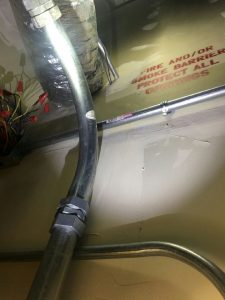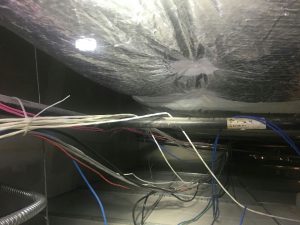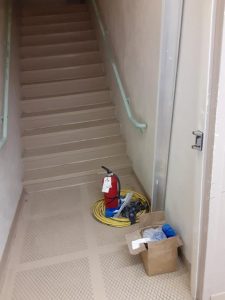Removing the cobwebs from the corner and dusting. Two essential bits of
housekeeping to keep a home looking nice. Some people enjoy this work
around the house, while others would rather be doing something a little
more substantial to keep their home in top shape. But both the small tasks
and big projects are needed to keep a home up to date, and functional for
those who live there.
Occasionally at my home we see a spider creeping stealthily along the
wall. Sometimes on sunny days and from the right angle I can see dust in
the air. Usually the dust is more noticeable if someone has just
vacuumed. But generally I don’t see the dust settle, or the spiderwebs
being woven. Usually it’s after walking by the cobweb in the corner for
the hundredth time, or after I pull a book from the shelf and see the lack
dust where it just was that I notice these things.
Why do I bring this up? Overhead inspections. How much overhead work
happens at your medical facility? Systems popping a ceiling tile here to
run a data drop, maintenance lifting another one to exercise a valve, etc.
Much like the dust settling over time, or the cobweb clinging to the
corner, these small activities can have a great impact above ceiling. They
can result in findings at your next Joint Commission survey. More
importantly, and heaven forbid, a fire breaking out and finding weakness in
your fire barriers.
Recently I was doing some overhead surveys and came across a few
violations. Others also found several. Pictures are posted below. Lets
play “can you spot the violation”? These were all noted and quickly
corrected. This remains a good teaching moment. Overhead inspections are
important. It’s never convenient to get out ladders and navigate past
equipment and furniture, but overhead inspections are an important practice
that should be part of your hospital or clinic’s preventive maintenance
program.

Wow, look at this electrical junction box! It is literally packed too tightly to fit on a cover. A knockout plug is missing. I’m certain that this is at least three violations of the National Electric Code.
 This violation is a little more difficult to spot. The barrier is nicely marked, but adjacent to it is an opening that hasn’t been properly fire caulked.
This violation is a little more difficult to spot. The barrier is nicely marked, but adjacent to it is an opening that hasn’t been properly fire caulked.
 How many cables can you secure to a fire sprinkler line? The correct answer is none.
How many cables can you secure to a fire sprinkler line? The correct answer is none.
 Again, these cables are improperly secured to a fire sprinkler line.
Again, these cables are improperly secured to a fire sprinkler line.
 These cables should be properly supported, instead of being draped over a fire sprinkler line.
These cables should be properly supported, instead of being draped over a fire sprinkler line.
Do you have a picture or story you’d like to share? I’d like to hear it!


 This violation is a little more difficult to spot. The barrier is nicely marked, but adjacent to it is an opening that hasn’t been properly fire caulked.
This violation is a little more difficult to spot. The barrier is nicely marked, but adjacent to it is an opening that hasn’t been properly fire caulked. How many cables can you secure to a fire sprinkler line? The correct answer is none.
How many cables can you secure to a fire sprinkler line? The correct answer is none. Again, these cables are improperly secured to a fire sprinkler line.
Again, these cables are improperly secured to a fire sprinkler line.  These cables should be properly supported, instead of being draped over a fire sprinkler line.
These cables should be properly supported, instead of being draped over a fire sprinkler line.